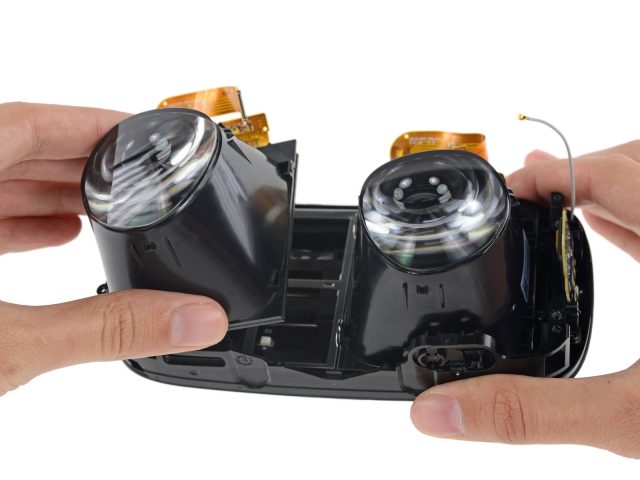
While those dev kits used off-the-shelf smartphone displays and generic lenses, the teardown highlights a much more customized solution now that the Rift is a consumer product (with Facebook's billions behind it). The Rift's dual lens and display assembly houses two separate 1080×1200 OLED panels with adjustable spacing between them to allow for easy focus at different interpupillary distances. Those panels measure 90mm diagonally, giving the Rift a final pixel density of 461 PPI. That's higher than the "retina display" on Apple's iPhone 6 Plus (401 PPI), but downright blocky compared to 1440p display on the Samsung Galaxy S6 and S7 (576 PPI), which already powers the Oculus-designed Gear VR headset.
That pixel density is put to a tough test on the Rift, too, since the panels are placed a couple of inches away from the user's eyes at all times (an average user would have to be eight inches from the Oculus display for the pixels to be indistinguishable). iFixit reveals an asymmetric, hybrid fresnel lens system that helps users zoom in and focus on screens that close.
The concentric rings on these thin lenses let your eyes easily focus at optical infinity when using the Rift, as iFixit memorably demonstrates with a laser pointer and fog machine. In addition, a sloping layer on the back of these custom lenses lets users adjust the focus on the Rift simply by tilting the headset up and down on their face to get a slightly different focal path to the display.
The full teardown is well worth a gander for anyone interested in what makes the new wave of virtual reality machines tick. iFixit gives the final unit a 7/10 repairability score, noting positives like easy-to-remove earpiece speakers and negatives like a headstrap that requires slicing through fabric to remove.

reader comments
39